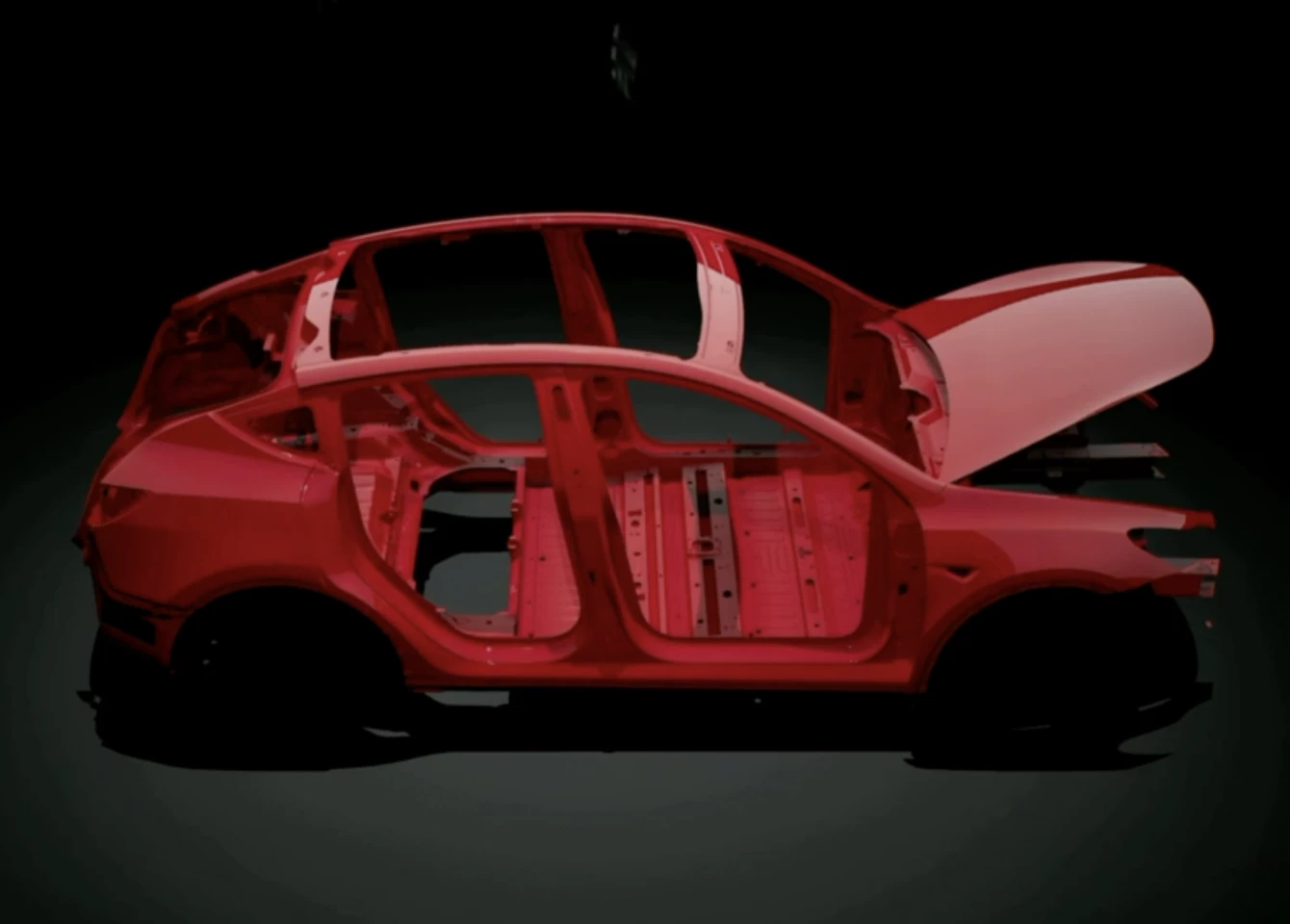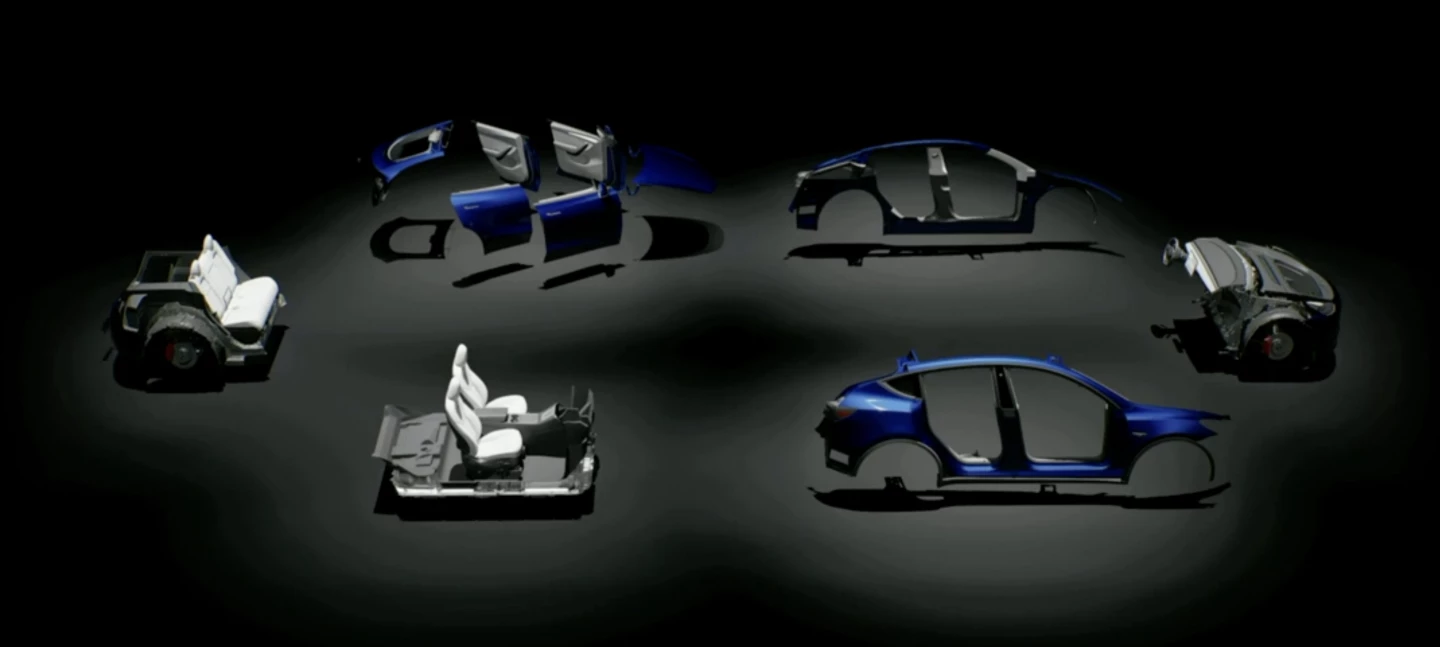At the company's 2023 Investor Day presentation, Tesla VP of Vehicle Engineering Lars Moravy described how the company's organizational structure is designed to ensure full accountability and a collaborative approach that makes sure manufacturing and automation considerations are part of every engineering and design decision.
"The places I used to work and the top manufacturing companies in the world, they don't sit together," said Moravy. "They're not one team. All of those teams, engineering, manufacturing, design, automation, they're all in one org. They all report to one person. We can't point fingers at each other, we have to solve [problems] together, which is the best way to innovate."
Thus allegedly united, the Tesla team is attempting the kind of ground-up, first-principles re-think that CEO Elon Musk is so fond of, targeted at a part of serial automobile production Moravy says has been around since the days of the Model T – and heavily focused on current and future automation via manufacturing robots.
"The traditional way of making a vehicle is this," he said. "You stamp it, you do build of body in white. You paint it, and you do final assembly. What's fascinating is, these shops are dictated by the organizational structures that exist. They're dictated by the boundaries that exist in the factory's layout. If something goes wrong in final assembly, you block the whole line, and you end up with buffering in between. This [system] is at the tail end of its manufacturing optimization; Henry Ford first invented this assembly line in 1922, it's been a hundred years, and it's really hard to make a change after a hundred years. And when you watch it happen, it's actually really silly to a guy like me."

"You take all these stamped panels, you put 'em together, then you put 'em in a framing station," he continued. "You build a body that looks something like a car, you put the doors on, and then you paint them. Once you get the color, you take the doors off, and then you start putting the interior inside the car. It comes in through the openings that already exist ... There's people coming in and out of the car, there's awkward movements. Then we lift the car up and put in stuff underneath it, we put it down, we put the seats in the car, and finally we close it all up with glass and we bring those doors that went away for a trip, and we put 'em back in the car. Most of the time, we're doing this with a big, giant car, and moving it, and doing nothing to it at all."
"If we're going to scale the way we want to do, we have to re-think manufacturing again," said Moravy. "It's part of the master plan. We have to make another step change in cost."
Tesla started this optimization, he says, with the Model Y. It features "gigacastings" designed to delete hundreds of parts. The battery is part of the structure of the car, and its casing forms the floor. That lets Tesla build the seats and some of the interior on top of the battery, giving workers and robots exceptional access from all angles.
"I really wanna hammer this home," said Moravy. "When you have a car that's five meters long, and you have people working around it like we did on Model 3, and we change that to this process where we [work on] different parts of the car [separately], we can do more at the same time, like we did with the Model Y structural battery pack. So if you're working on the front part of the car, or the rear part, we can get more people, or more robots working on the car at the same time. Better operator density. Less time doing nothing. I call that space/time efficiency. It has nothing to do with quantum mechanics. We get 44% more operator density, which means more work. Less time walking back to the station, 30% improvement in space-time efficiency. And because we're not building it in and out of the car with those slow movements of robots, when we go to automated, it's gonna be a lot easier. "
So with upcoming next-gen Tesla cars, the company won't be assembling the shell of the car until everything else is done. The front, back, sides and foundation of the car will be treated as independent, and manufactured and painted separately in parallel operations. The final line will be very short.

"It'll look something like this," said Moravy. "We'll build all the sides of the cars independently. We only paint what we need to, and then we assemble the parts of the car once, and only once. We put them where they need to go. The interior is attached from the bottom up, or a top-down strategy, so there's more access for those robots and people. We aren't moving heavy objects around and doing nothing to them. And it means we're doing more work on the car, more of the time.
"Then, when we take all these tested sub-assemblies and we put them together, we finally assemble the car only one time, putting the sides on with all of their parts, to a front and rear that was already assembled, carrying the floor in with the seats, and finally boxing it out with the doors one time. Just like Cybertruck.
"In the end, what does that mean? To increase the scale of electric vehicles [by] orders of magnitude, we have to make the constraints part of the solution. It leads us to more than 40% reduction in footprint, which means we can build factories faster, with less CAPEX and more output per unit dollar. It also means that, through this innovation and some of what my other engineering colleagues will talk to you about in the future, we'll reduce costs as much as 50%. This is the 2-for-1 concept you hear me and Elon talking about on earnings calls."
Check out the presentation, with some nice animations, in the video below.
Source: Tesla







